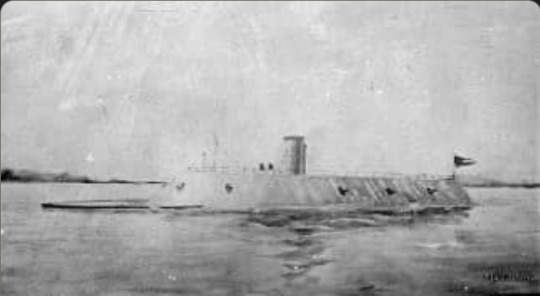#CSS Virginia
Explore tagged Tumblr posts
Text
#software developers#software development#web designers#web design#website development#web developers#virginia#united states#angular#jquery#user interface#ui#ui ux design#javascript#frontend#coding#html css#html#html5#html5 css3#htmlcoding#css#code#redux#bootstrap#firestore#firebase#AdobeXD#Section 508#json
1 note
·
View note
Text
USS Monitor
Today marks the 51st anniversary of the discovery of the USS Monitor, a Civil War wreck that lies 16 miles off the coast of Cape Hatteras, North Carolina.
The USS Monitor was an iron-plated warship launched in January 1862. It was built for the Union Navy in an effort to match the Confederacy’s own armored vessel, the CSS Virginia.

While the battle between the Virginia and the Monitor ended with a mutual retreat and no clear victor, news of the battle changed the course of naval history. Many European nations halted the construction of wooden ships, shifting focus to armored designs. Iron and steel would become the new standard for warships around the world.

The low-lying design of the Monitor was well suited for river combat, but fared poorly in the open ocean, particularly rough seas. This would turn out to be the vessel's undoing, and the ship would fall not to the forces of war, but to the forces of nature. It was caught in a storm while being towed on New Year's Eve, 1862, and sank in 230 feet of water.

On August 27th, 1973, 111 years after its sinking, the wreck of the USS Monitor was detected in 230 feet of water using a towed sonar system aboard the Duke University Research Vessel (RV) Eastward. Sonar images did not match the expected shape of the Monitor: this was because it was sitting on the seafloor upside down.
Source
80 notes
·
View notes
Text

USS ROANOKE (1855) was originally built as one of the Merrimack class screw frigates. She is the sister-ship to USS MERRIMACK. (The same ship which went on to be razed during the civil war, captured and converted into the CSS Virginia by the Confederates.) She served as flagship of the Home Squadron in the late 1850s and captured several Confederate ships after the start of the American Civil War in 1861.

"Lithograph depicting the ship during the final stages of her conversion from a steam frigate to a triple-turret ironclad, at the Novelty Iron Works, New York City, circa the first half of 1863. The original drawing of the scene was done by G. Hayward for Valentine's Manual, 1863. Note the large derrick at left, and the Novelty Works' building at right."

"Lithograph published during the Civil War era, depicting the ship after her conversion to an ironclad."
In 1862, she was selected to be transformed into a monitor, as it would be faster to convert an existing steam powered ship than coming up with a new design. She was planned to be an ocean-going multi-turret monitor. Although, design flaws, such as the weight of her armor and turrets causing her to roll excessively and deep her draft, prevented her use to only harbor defense.

"Sepia wash drawing by R.G. Skerrett, 1899, depicting the ship underway after her conversion to an ironclad, circa 1863-65."
After her conversion was complete, local politicians in New York City lobbied to have her assigned to New York harbor. However, the Navy ordered her to Hampton Roads, Virginia, to join the blockading squadron there.

"Watercolor by Oscar Parkes, depicting the ship after she was converted to an ironclad, circa 1863-1865. Courtesy of Dr. Oscar Parkes, London, England, 1936."
She remained there through the end of the war. Roanoke was placed in reserve after the war and sold for scrap in 1883

"At the New York Navy Yard, Brooklyn New York, probably following her decommissioning in June 1865. The ship of the line in the left background is USS Vermont, which was receiving a ship at the Navy Yard until September 1865."
U.S. Naval History and Heritage Command: NH 45364, NH 57813, NH 50462, NH 59548, NH 48105
#USS ROANOKE (1855)#USS ROANOKE#Merrimack Class#Monitor#Warship#Ship#United States Navy#U.S. Navy#US Navy#USN#Navy#American Civil War#Civil War#1861#1862#1863#1864#my post
21 notes
·
View notes
Text
A Call to Action
Hi all.
I wish I had better news to give. I thought long and hard about whether or not I should share this because I will be functionally doxxing myself when I do. But I've had several days to sleep on it and think about what to do. I've come to the conclusion that this is more important than me. This will be a long post but I urge you to read all of it. I'm afraid I have to be thorough here given the situation.
I think everyone who has been following me for more than a week knows how much I love religious studies as a field. It is my single greatest passion in life.
Unfortunately my school, UNC Greensboro, is trying to eliminate our department under claims of it being "not financially justifiable," among others (including anthropology and all Korean language classes.) These claims are highly spurious. Debunking this in full will take some time but I'll try to cover as much ground as I can in the relatively short space I am given and provide some sources. If anyone needs further elaboration, I'll report to the best of my abilities.
This is all to lead into the fact that I would like to provide some opportunities for people to help us out over here, which I will cover at the end. The shortest possible version is: please signal boost this. I do urge you to read it in full, though.
With the first introduction out of the way...
A Second But Very Brief Introduction to Religious Studies and a Justification of Its Presence in Academia (Given the Natural Bent of this Site is Sometimes Towards Antitheism)
Feel free to skip this if you have any familiarity with religious studies as a discipline, I'm putting it here because I find that it's often confounded with theology and every time I talk about it someone asks me if I'm going to be a priest (no.)
To be clear, religious studies is not theology. It does not purport the existence of any higher spiritual powers or presences. It is strictly the study of religion and spirituality as a force in human culture. This falls under both negative and positive effects, and covers everything from historical impact to individual psychology to macrosociological effects of religion to the simple understanding and study of mythology and folklore.
While internalized cultural norms are of course an issue that must be overcome by any scholar, for a religious studies scholar the Catholic Worker, the Sikh ragi, and the long-dead Sumerian ašipu should all have their beliefs and inner lives treated with the exact same sort of gravity and understanding, no matter how far their own beliefs might be from our own. It is, in my subjective opinion, the most humanizing of all the humanities because we are forced to operate on a deeply personal, vulnerable level.
I wish I didn't have to explain why these sorts of skills are important, especially given the current climate of intolerance that has been growing across the world and the growth of anti-intellectualism. I recognize that I might have to but I don't want to linger on that given everything else I have to cover in this post. Go ahead and ask as I do love talking about my field but I might take some time to answer.
A Brief Summary of Events Beforehand
My school has hired a firm known as rpk Group (lack of capitalization true to actual title) to restructure school funding financially with a focus on eliminating programs deemed to not earn enough for the school. Here is a brief explanation from the source itself. I apologize if the school website's CSS is still broken and it's difficult to read due to the social media icons being about thirty times the size they should be. Apparently they couldn't find the funding to pay a web designer instead of an expensive financing firm.
Those of you who have kept up with news in American academia may recognize this as the same group that forced cuts at West Virginia University. Please keep that in mind as we go forward.
Here are the high points:
Religious studies attained a passing grade under the rubric set out by the school. There have been active attempts to hide the scoring system from anyone but faculty. The spreadsheet in which the data was published has been password protected (source, which also contains several other refutations to the chancellor's talking points.)
For those who wish to keep score, anthropology did as well and our anthropology program is known for being quite good. This is without going into the other benefits the anthropology program provides the school with, which include such things as a community garden.
There were lower scoring programs that were kept. In other words, the decision-making process has been entirely inscrutable.
This is supported by the fact that the administration has been giving out incorrect numbers regarding program attendance to both news outlets and students, with some programs proposed to be cut having their student enrollment off by several factors.
Religious studies had over five times as many students as was originally reported. The Chinese language minor was reported to have zero students when there were thirty-six. To operate with this level of error from alleged professionals beggars belief and undermines any faith I would've had in this process.
The administration has claimed that they used the correct numbers in their rubrics. As they will not publish further data to myself nor the public, I have no evidence this is actually true.
They were going to cut Korean language as a minor. We don't have a Korean language minor. We do have a track of Korean language and I am given to understand as of this semester, culture courses. Which are operated solely by one professor and are consistently full or close to capacity due to popularity. There is no evidence they are losing the school money and I have several testimonials that the Korean culture-related programs have drawn students to UNCG as it is a unique niche the school gives not just over other UNC schools but over other colleges and universities.
Faculty and students were given information about what programs would be cut at precisely the same time, through an email sent schoolwide. Many students and faculty were in class at the time this was sent and had to proceed as if they weren't about to have their programs eliminated.
The administration alleges that current students will be able to finish their degrees. I have little faith this is the case for reasons that will take a while to get into but, to summarize as briefly as possible, completion of a degree here requires certain high-level classes that may be difficult to obtain with faculty cuts.
The chancellor alleges that Jewish Studies and Islamic Studies will not be affected by the elimination of religious studies, despite the fact that they are hosted under the department and Islamic Studies uses the same funding. As such, I believe that the highly technical and academic category used to refer to this sort of thing is "a blatant lie."
The administration has tried to quietly edit out any errors in original reporting. I am pleased to report that, as many of us intensely online people know, the Wayback Machine exists. Here is the original statistically incorrect press release that was given, which they have tried to bury.
While they have held forums, these have largely been ceremonial gestures rather than serious attempts at communication. At the one I went to, all non-administration speakers were given only two minutes to speak while the chancellor and dean were given as much time as possible to respond. Their responses to concerns were often dismissive and rarely addressed the necessary issues. I believe any person present will back me up on this, though I am not currently in possession of a voice recording.
I must operate within the evidence I am given. The best-faith interpretation of their actions is that the metrics they were using to determine what cuts should be made are incorrect and must be re-done before going through with any sort of program cuts, and that the administration's collaboration process with the group they employed is poor to nonexistent given the scattershot information provided. There is very, very clearly a communications breakdown somewhere along the line that raises this entire procedure into question.
I think it goes without saying it's all downhill from there. The level of arbitrariness with regards to cuts, lack of professionalism, and total lack of transparency would lead a reasonable person to believe there are heavy political motivations involved here and not simple brute facts. You are welcome to draw your own conclusions anywhere along this spectrum, of course. I encourage you to be skeptical.
Lastly, if I can't convince you that it's worth stopping this process to save religious studies, think about the anthropology department. Think about the languages that are getting cut. Think about physics or mathematics. A large-scale public university without a physics program is quite frankly unreal and the fact it's primarily humanities being targeted runs parallel with some sinister trends within American education. This process should, at the very least, be halted for time being.
What You (the Reader) Can Do
Firstly, be aware that we have until February 1st before decisions are finalized. I apologize for the short time limit. Myself and other members of the community were taken completely by surprise as well, and once again as I mentioned above it has caused some level of cynicism around the motivations of the administration.
With that out of the way...make noise about this. The school administration is making all efforts to keep this quiet. I can say the good news is that according to other people on the ground, they are beginning to lose control of their narrative that they are making difficult financial decisions to keep the school financially solvent.
Believe it or not, the farther removed you are, the better. If this hits a national scale then the school may be finally forced to acknowledge they are rapidly causing the otherwise prestigious UNC system, typically considered to be one of the best public university systems in the US, to be a national laughingstock and that they will lose money as their reputation declines in a way that they would not have if they'd simply carried out this process in a more reasonable way.
You can sign our petitions here and here. Easy enough, takes about three minutes, self-explanatory.
Finally, reach out to an academic or any passionate learner in a specialized field today. A lot of us feel understandably threatened and demoralized. Again, this is not just about me or even about my school. This is about trends within the American education system. Explaining the hows and whys in full detail is not within the scope of this post, but I think a reasonable person can conclude after looking at the current evidence that there is a dismantling of American schools in favor of a corporatized existence. For those of us who love knowledge and learning, this is incredibly sinister. Knowledge should not have a price tag put on it.
A Final Word
I and several other people have Chancellor Gilliam on record saying that he has dedicated his life to working at the collegiate level and towards students. While he and the administration have tried to ensure that their statements outside of highly controlled environments are not easily accessible, I should be able to provide a clip if needed given that this statement was livestreamed and North Carolina is a one-party-consent state in regards to recordings.
They have consistently characterized this process as having to make hard decisions to keep the university afloat. The chancellor is currently the highest-paid employee within UNCG itself and the fourth highest-paid member of administration within the UNC system as a whole (source.) Please be aware this does not include other benefits, which in 2022 put his salary above $500,000 (source.) As others have, I must ask why these "difficult decisions" within the school have not included a salary cut for himself if he is so dedicated to improving the lives of students.
Thank you for your time and consideration. If you've gotten this far, you've already listened more than anyone outside of the academic departments have and that means a lot to me in and of itself.
#religious studies#mythology#college#studyblr#college life#university#north carolina#theology#religion#unc#tagging in as much stuff as i can think of lol#anything is worth a shot at this point#academia
20 notes
·
View notes
Text
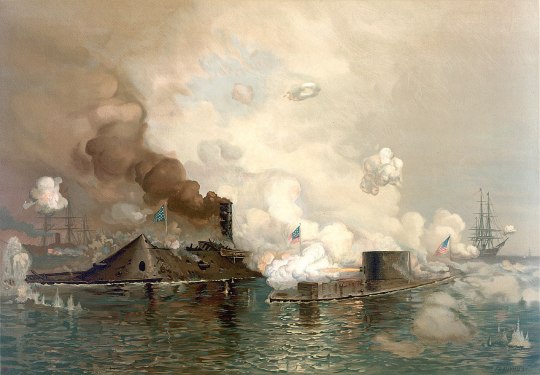
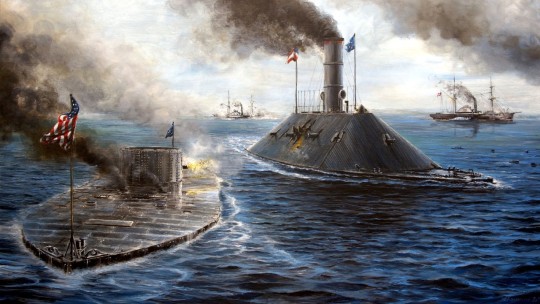
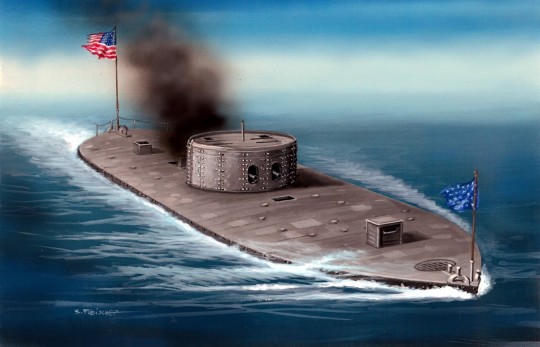
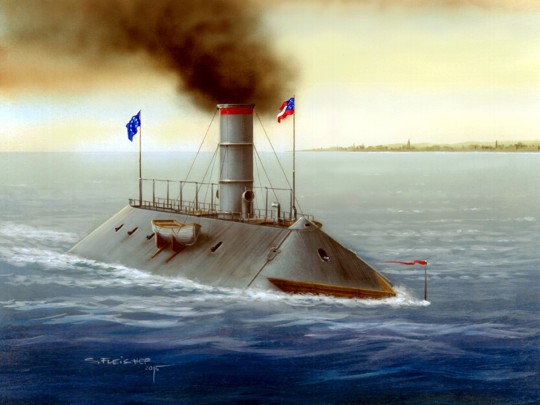
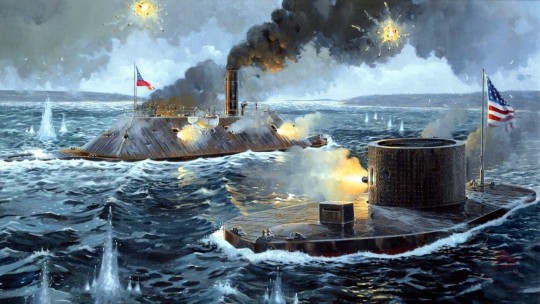
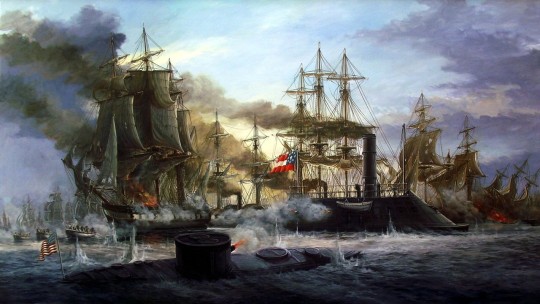
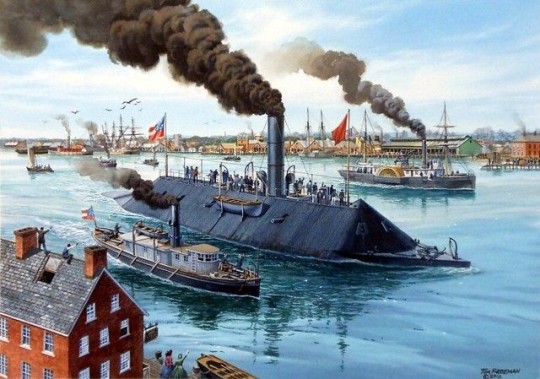
The Battle of Hampton Roads. American Civil War. The famous showdown between the Ironclads USS Monitor and CSS Virginia. Ultimately the two vessels pounded on each other for a while then went their separate ways, the outcome undecided. But it was a turning point for warship combat.
#civil war#american civil war#hampton roads#Monitor#Virginia#ironclads#history#naval history#military history#seabattle#warship#art#artwork#war art#military art
7 notes
·
View notes
Text
went to Virginia Beach yesterday
pro: drive unexpectedly went through Hampton Roads, site of the historic U.S. Civil War Battle of Hampton Roads between USS Monitor and the CSS Virginia, the first naval battle between ironclad ships in history
pro: visited the Military Aviation Museum, saw among other things the only airworthy Ju-52 in the world
con: went to Virginia Beach
7 notes
·
View notes
Text
FDR the Naval Art Collector

Franklin Roosevelt was an avid, lifelong collector of prints, engravings, and paintings illustrating the history of the United States Navy. In 1922, he purchased this Xanthus Smith painting from Newman F. McGirr, a Philadelphia book and art dealer. FDR often purchased naval artwork from McGirr during the 1920s and 1930s.
Smith was a marine artist who served in the United States Navy during the Civil War. He is best known for his depictions of important naval battles of that war—a special interest of FDR’s.
Roosevelt was initially attracted to this painting of the 1862 battle between the CSS Virginia (formerly the USS Merrimack) and the USS Congress, which he found listed in a McGirr catalog. One of his Delano relatives had been instrumental in the Merrimack’s construction. Roosevelt approached this purchase cautiously. In a March 7, 1922, letter to McGirr he noted: “I should not care to have it if it were one of the paintings of Mr. Smith which looks more like a mathematical drawing than a work of art, but if it is one of the better paintings I should be glad to have you send it over to me at 49 East 65th Street, New York City, to see.”
After viewing the painting, FDR paid McGirr $42 for it. He attached a note to the bill: “Glad to have—Much better than I thought! FDR.”

Join us throughout 2023 as we present #FDRtheCollector, featuring artifacts personally collected, purchased, or retained by Franklin Roosevelt, all from our Digital Artifact Collection: https://fdr.artifacts.archives.gov/objects/7402
Read more about FDR's naval art collection on our blog: https://fdr.blogs.archives.gov/2020/09/03/fdrs-naval-art-collection-history-captured-on-canvas/
#fdr#franklin d. roosevelt#fdr the collector#naval art#naval history#us navy#civil war history#civil war naval history#museum from home#museum collection#artifact collection
12 notes
·
View notes
Text
An extraordinary find in the New York Times of May 30, 1862: "THE FIRST IRON-CLAD. Representation of the Armored Vessel, Patented by Thomas Gregg, of Pennsylvania, in 1814."



The drawings given above, copied with the kind permission of the Patent-office authorities for the use of the TIMES from the originals deposited in the Bureau, delineate a vessel proposed by THOMAS GREGG, of Pennsylvania, and for which letters patent were taken out by him March 19, 1814.
It will be seen at that early day, so soon after the original application of steam to maritime propulsion, GREGG proposed to employ that motor, protecting his propelling apparatus by a device certainly effectual, if practicable.
This futuristic vessel concept from the War of 1812 era was never built, although another steam-powered "floating battery" was constructed: USS Demologos (also called USS Fulton). @ltwilliammowett put together a great write-up of her. Made too late in the war to see combat, Demologos eventually exploded while lying at anchor in 1829.
In early March 1862, shortly before this newspaper article was published, the first battle of ironclad warships took place between USS Monitor and CSS Virginia in the American Civil War. It's fitting that the public would want to learn more about the earliest attempts at entirely steam-powered warships without sails.
#War of 1812 Wednesday#war of 1812#age of steam#age of sail#naval history#ironclads#military history
14 notes
·
View notes
Text

It was fought over two days, March 8–9, 1862, in Hampton Roads, in Virginia. The battle was a part of the effort of the Confederacy to break the Union blockade, which had cut off Virginia's largest cities and major industrial centers, Norfolk and Richmond, from international trade…
Please follow link for full post
Julian Oliver Davidson,Marine, Art, artist, Beach, biography, footnotes, History, Paintings, Sand, Sea, Seascape, Ships, Umbrellas, Zaidan, Harbor,
01 Marine Art, The Battle of the USS Monitor and CSS Merrimack (Virginia), With Footnotes #310
https://sailtheoceanwinds.blogspot.com/2023/09/01-marine-art-battle-of-uss-monitor-and.html
3 notes
·
View notes
Text
Events 3.9
141 BC – Liu Che, posthumously known as Emperor Wu of Han, assumes the throne over the Han dynasty of China. 1009 – First known mention of Lithuania, in the annals of the monastery of Quedlinburg. 1226 – Khwarazmian sultan Jalal ad-Din conquers the Georgian capital of Tbilisi. 1230 – Bulgarian Tsar Ivan Asen II defeats Theodore of Epirus in the Battle of Klokotnitsa. 1500 – The fleet of Pedro Álvares Cabral leaves Lisbon for the Indies. The fleet will discover Brazil which lies within boundaries granted to Portugal in the Treaty of Tordesillas in 1494. 1701 – Safavid troops retreat from Basra, ending a three-year occupation. 1765 – After a campaign by the writer Voltaire, judges in Paris posthumously exonerate Jean Calas of murdering his son. Calas had been tortured and executed in 1762 on the charge, though his son may have actually died by suicide. 1776 – The Wealth of Nations by Scottish economist and philosopher Adam Smith is published. 1796 – Napoléon Bonaparte marries his first wife, Joséphine de Beauharnais. 1811 – Paraguayan forces defeat Manuel Belgrano at the Battle of Tacuarí. 1815 – Francis Ronalds describes the first battery-operated clock in the Philosophical Magazine. 1841 – The U.S. Supreme Court rules in the United States v. The Amistad case that captive Africans who had seized control of the ship carrying them had been taken into slavery illegally. 1842 – Giuseppe Verdi's third opera, Nabucco, receives its première performance in Milan; its success establishes Verdi as one of Italy's foremost opera composers. 1842 – The first documented discovery of gold in California occurs at Rancho San Francisco, six years before the California Gold Rush. 1847 – Mexican–American War: The first large-scale amphibious assault in U.S. history is launched in the Siege of Veracruz. 1862 – American Civil War: USS Monitor and CSS Virginia (rebuilt from the engines and lower hull of the USS Merrimack) fight to a draw in the Battle of Hampton Roads, the first battle between two ironclad warships. 1908 – Inter Milan was founded on Football Club Internazionale, following a schism from A.C. Milan. 1916 – Mexican Revolution: Pancho Villa leads nearly 500 Mexican raiders in an attack against the border town of Columbus, New Mexico. 1933 – Great Depression: President Franklin D. Roosevelt submits the Emergency Banking Act to Congress, the first of his New Deal policies. 1942 – World War II: Dutch East Indies unconditionally surrendered to the Japanese forces in Kalijati, Subang, West Java, and the Japanese completed their Dutch East Indies campaign. 1944 – World War II: Soviet Army planes attack Tallinn, Estonia. 1945 – World War II: A coup d'état by Japanese forces in French Indochina removes the French from power. 1945 – World War II: Allied forces carry out firebombing over Tokyo, destroying most of the capital and killing over 100,000 civilians. 1946 – Bolton Wanderers stadium disaster at Burnden Park, Bolton, England, kills 33 and injures hundreds more. 1954 – McCarthyism: CBS television broadcasts the See It Now episode, "A Report on Senator Joseph McCarthy", produced by Fred Friendly. 1956 – Soviet forces suppress mass demonstrations in the Georgian SSR, reacting to Nikita Khrushchev's de-Stalinization policy. 1957 – The 8.6 Mw Andreanof Islands earthquake shakes the Aleutian Islands, causing over $5 million in damage from ground movement and a destructive tsunami. 1959 – The Barbie doll makes its debut at the American International Toy Fair in New York. 1960 – Dr. Belding Hibbard Scribner implants for the first time a shunt he invented into a patient, which allows the patient to receive hemodialysis on a regular basis. 1961 – Sputnik 9 successfully launches, carrying a dog and a human dummy, and demonstrating that the Soviet Union was ready to begin human spaceflight. 1967 – Trans World Airlines Flight 553 crashes in a field in Concord Township, Ohio following a mid-air collision with a Beechcraft Baron, killing 26 people. 1974 – The Mars 7 Flyby bus releases the descent module too early, missing Mars. 1976 – Forty-two people die in the Cavalese cable car disaster, the worst cable-car accident to date. 1977 – The Hanafi Siege: In a 39-hour standoff, armed Hanafi Muslims seize three Washington, D.C., buildings. 1978 – President Soeharto inaugurated Jagorawi Toll Road, the first toll highway in Indonesia, connecting Jakarta, Bogor and Ciawi, West Java. 1987 – Chrysler announces its acquisition of American Motors Corporation 1997 – Comet Hale–Bopp: Observers in China, Mongolia and eastern Siberia are treated to a rare double feature as an eclipse permits Hale-Bopp to be seen during the day. As the comet made its closest approach to Earth on March 26, all 39 active members of the Heaven's Gate cult committed ritual mass suicide over a period of three days, in the belief that their spirits would be teleported into an alien spacecraft flying inside the comet's tail. 1997 – The Notorious B.I.G. is murdered in Los Angeles after attending the Soul Train Music Awards. He is gunned down leaving an after party at the Petersen Automotive Museum. His murder remains unsolved. 2011 – Space Shuttle Discovery makes its final landing after 39 flights. 2012 – A truce between the Salvadoran government and gangs in the country goes into effect when 30 gang leaders are transferred to lower security prisons.
1 note
·
View note
Text

One of the most-retold battles of the Civil War is the clash during the Battle of Hampton Roads, between the ironclads USS Monitor and the CSS Virginia --the latter of whom had been constructed over the hull of the converted screw frigate USS Merrimack. While neither vessel inflicted significant damage upon the other (nor did either side gain any real tactical advantage), the battle is nevertheless historically significant as it decisively ushered in the end of the era of wooden-hulled ships. However there is an equally compelling behind-the-scenes tale of how the Union was galvanized into rushing the Monitor into production so speedily, and that story centers around Union spy Mary Louvestre (possibly also spelled Touvestre). There are numerous conflicting (and exaggerated) accounts of Louvestre's heroism; one of these is a popular-but-fictionalized account authored by My Haley, titled The Treason of Mary Louvestre.
Born free in 1812 Norfolk, Virginia to parents originally hailing from French San Domingue, Mary (neé Oglivie) grew up identifying as biracial ("mulatto") and while the details of her childhood and formative years are mostly unrecorded, in 1838 she is on record as having registered as a business owner in the city --while the archived document does not specify the nature of the business, it is popularly assumed that it would have either been an entertainment venue (such as a restaurant or a bar), or a boarding house. But perhaps more significantly, a year later, Mary is recorded as having purchased an enslaved 10 year-old boy, Mark Rene De Mortie, who also came from the same part of San Domingue as her parents. She taught De Mortie to read and write, and emancipated him in March of 1850, just shy of what would have been his 21st birthday, and while he headed off onto a fascinating journey of his own, we'll have to leave that tale for now (watch this space for a future lesson!). In 1844 Mary married Michael Louvestre, another free French "mulatto" from Guadeloupe, who is assumed to have arrived in Norfolk sometime in 1837. The marriage produced three children but two died in childhood due to the then-yellow fever epidemic, and only one daughter, Susan, survived into adulthood. Susan and her husband produced one grandchild, Robert, before they both likewise died, and Robert was raised by his grandparents.
Throughout the 1850s Mary continued to obtain business licenses to operate additional boarding houses, while Michael worked just across the river from their boarding house... at the Gosport Shipyard in Portsmouth. Which brings us up to 1861. Once the Civil War kicked off, Michael happened to be working as a tool keeper in the steam engineering department, where he and several other machinists and shipyard employees had the opportunity to watch, firsthand, the beginning of the Confederate project to convert the Merrimack into the Virginia. The Louvestes enjoyed relative "invisibility" due to their age and their race, and realized the threat such a vessel would present to the Union blockade. In February 1862 Mary, with the help of her husband and his co-workers, snuck onto the shipyard and traced a near-perfect copy of the plans, sewing them into the hem of her dress. She then traveled unnoticed to Washington (likely by steamboat and not on foot as some more fanciful accounts insist!) and delivered the copied plans for the CSS Virginia directly to Secretary of the Navy Gideon Welles. Work on the Monitor promptly picked up the pace, ensuring that the vessel would actually be present in time to square off against the Virginia, and thwart what would have otherwise been an uncontested Confederate domination of the entire Hampton Roads area. After the war, Secretary Welles travelled in person to what was now known as the Norfolk Naval Station, and inquired after Mary so that he might present a reward for her services to the Union, though history does not record what form (if any) that reward ultimately took. That same year she did compose a letter to Commodore A. H. Kilty at Norfolk Naval Shipyard, where she spoke of "Our Navy" and its "heroic defenders." This letter was retained as part of Welles's collection.
Michael died in 1880 and Mary followed shortly afterwards in October of 1883. On November 8, local newspaper The Norfolk Virginian, bore a front-page headline of "Death of a Respected Old Colored Woman;" the verbiage being significant because newspapers rarely reported on the goings-on of Black Americans. "Mary Louveste, an old and respectable colored woman, was found dead in her bed on yesterday morning in her house at the corner of Newton's Lane and Nivison Street." The article goes on to speak of Mary and Michael's marriage: "the two always bore excellent characters (sic) and stood well in the community by reason of their thrift and polite bearing. The old woman possessed some property and recently sold her house for upwards of $2,000. Efforts were lately made to get her to go to the hospital to spend the rest of her days, but she refused to go." No mention is made in the article of her brief-but-critical career in espionage, nor of her connection to Secretary Welles. No visual representation exists of Louvestre; my accompanying illustration is taken from a conjectural sculpture by a local artist.
#black history#civil war#hampton roads#virginia#monitor#sewells point#fort monroe#gosport shipyard#norfolk naval station#mary louvestre#teachtruth#black history month
1 note
·
View note
Text
Saturday Morning Coffee
Good morning from Charlottesville, Virginia! ☕️

Were four days away from what is the most consequential Presidential vote in my lifetime, perhaps the country’s lifetime.
Voting is the most important thing you can do to save our democracy.

I’ll leave it at that. I hope you enjoy the links.
Pema Levy • Mother Jones
Donald Trump may be a known quantity. He’s been a public figure for decades, a television star, and president from 2017-2021. But a second Trump term would present something the United States has never experienced before. Not a would-be authoritarian in the White House—that was Trump’s first term—but a would-be authoritarian who could actually accomplish the task of transforming the federal government into a tool of political repression.
Don’t vote for this man. He’ll destroy our country as we know it and turn it into a hellscape.
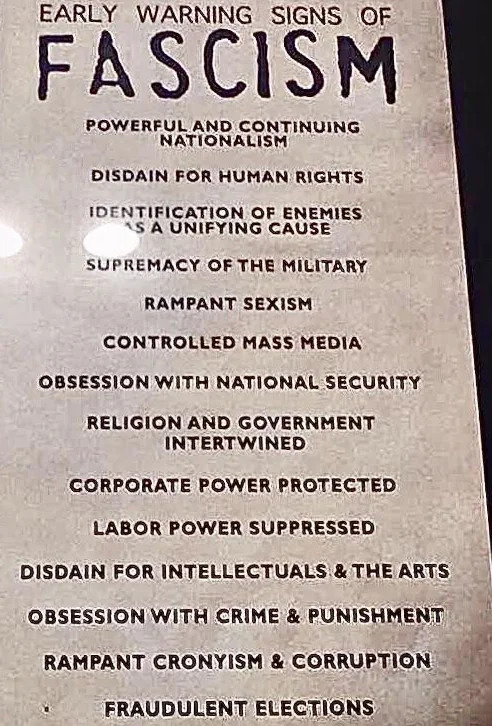
Sascha Pare • Live Science
High school students who came up with ‘impossible’ proof of Pythagorean theorem discover 9 more solutions to the problem
I love that a couple of high school kids figured these proofs out. Good for them!
Dave Winer • Scripting News
I’m searching for some common ground between the twitter-like systems, a basis for interop, a common API even. We had that for the blogging layer of this onion, something called the MetaWeblog API. All the popular blogging software supported it. And that meant you could write once and publish to many places. And you could write the script that did that in an afternoon or two. We started out with simple systems and the best of intentions. There’s no technical barrier. And we could do it in a few weeks at most if there was a will to do it.
I have thoughts around this as well that are built around Dave’s desire to use RSS to populate the various services. It deserves a blog post all its own. Maybe I’ll have enough gumption to do that someday. 😃
Matt Carroll • Flock
Over the years, Flutter has attracted millions of developers who built user interfaces across every platform. Flutter began as a UI toolkit for mobile - iOS and Android, only. Then Flutter added support for web. Finally, Flutter expanded to Mac, Windows, and Linux. Across this massive expansion of scope and responsibility, the Flutter team has only marginally increased its size. To help expand Flutter’s available labor, and accelerate development, we’re creating a fork of Flutter, called Flock.
This feels extremely ambitious to me and I fear it’ll fail. Hopefully it doesn’t cause a mess in the community.
Sidney Blumenthal • The Guardian
Donald Trump keeps saying that if he is elected to a second term he will prosecute his political opponents, “the enemies within”. On 22 October he stated, once again, that as president he would use “extreme power … We can’t play games with these people. These are people that are dangerous people … an enemy from within.”
This man is a menace and must be defeated once and for all. Kick him to the curb so, hopefully, he’ll get the idea he’s not wanted and go play golf for the rest of his miserable life.

Iain Thomson • The Register
Drivers passing through San Francisco have a new roadside distraction to consider: billboards calling out businesses that don’t cough up for the open source code that they use.
Some open source projects thrive and some struggle. If more companies would dedicate some resources to these projects it would be better for everyone involved. We don’t need more incidents like the person who snuck a back door into an open source project or just see them abandoned and left to bit rot.
Ahmad Shadeed
Currently, the CSS Working Group (CSSWG) is discussing whether to include masonry as part of CSS grid, or as a new layout module?
I like this, especially if the author(s) of masonry agree with the idea.
Louie Mantia
I wish there were more browsers, and I wish they were more unique. I appreciate that Arc attempted to innovate, but their ego and hubris are a little frustrating. They believe their product is so great that everyone should use it, including their own family and friends. However, when they don’t, they are left feeling perplexed.
I know lots of folks at work using Arc and they love it! I’m skeptical of it. Not because it’s different but because it’s built on Chromium and I don’t trust Google.
Tim Anderson • Dev Class
A Google engineer presented a proposal to the official standardization committee that would split JavaScript into two languages, a core to be implemented by runtime engines and a more capable variant which depends on tools that compile it down to that core.
I thought the idea of a core was Web Assembly? Maybe that’s too broad? I’d like to know more about what this proposal implies and how would it affect developers.
Michael Miszczak • Just a Pack
A couple of weeks ago, in a moment of caffeinated inspiration/despair, I sat down and wrote a long Facebook post as to why we were ditching Google and switching to DuckDuckGo. Today I want to dive even deeper into this topic, and give you a first-hand account of how Google is killing hundreds of thousands of blogs and small publishers.
Blogs were never really meant to be monetized but enterprising folks have figured out a way to do it.
Unfortunately relying on an advertising company’s search engine to surface your blog to users is risky, as the article points out.
My blog is for me and the ten folks who read it. It’s an outlet. Thankfully I don’t have to make a living from it. I’d starve.
Emma Roth • The Verge
Though Dorsey’s message didn’t specify how many employees would be laid off, sources told Fortune that it could be around 100 employees — or about a quarter of Tidal’s remaining staff. Tidal cut 10 percent of its workers last December, and Dorsey reportedly considered a major reorganization at Block in July.
A few years back, during COVID summer, I tried Tidal, Spotify, and Apple Music. Tidal isn’t bad at all. It’s another competitor in the big music service scene. Granted, it’s the smaller of the three, but the user experience at the time was perfectly fine and the music sounded just fine.
I landed on Apple Music, which has the worst user experience, because it is bundled as part of Apple One. It’s fine.


0 notes
Text
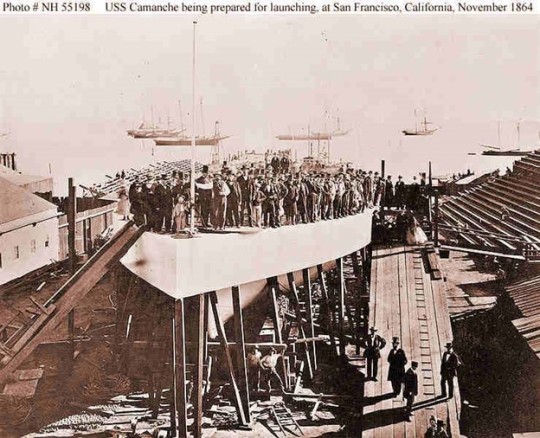

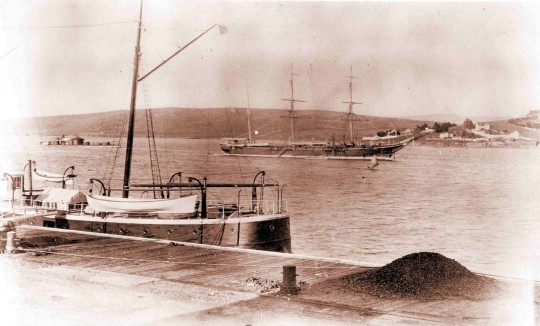


San Francisco’s Battleship
During the late 1800’s the Mare Island waterfront was defined in part by the presence of a warship with the dubious distinction of having been sunk, before it was launched. That ship owed its presence to our Nation’s bloodiest conflict. When Confederate General P.G.T. Beauregard bombarded and captured Fort Sumter in 1861 his action started the Civil War. The war was primarily fought in the East, but California was certainly not immune to the impact of the conflict. With the outbreak of war, most federal troops and warships were withdrawn from California and sent to the east. The loss of those troops jeopardized the ability of the government to counter the actions of southern sympathizers, confederate raiders, ongoing Indian wars and to provide a show of force to dissuade foreign nations who were tempted to weigh in in support of the Confederacy. The lack of a credible navy presence on the Pacific also increased anxiety that San Francisco lay nearly defenseless to Confederate raiders and foreign warships should they ally with the rebellion. In fact, unknown to the residents of San Francisco the Commanding Officer of the Confederate Raider CSS Shenandoah which had been pillaging northern shipping throughout the Pacific eventually turned his sights to attacking San Francisco under cover of darkness and conducting a prolonged bombardment to demand a ransom from the City. His plans were only foiled when the Civil War ended before he could reach San Francisco Bay.
Efforts to bring an iron clad warship to San Francisco Bay to improve San Francisco’s defenses gathered steam following the successful battle of the USS Monitor with CSS Merrimac at Hampton Roads, Virginia in 1862. That battle proved the superiority of iron clad warships ushering in a new era of naval warfare. The California congressional delegation became even more resolute, lobbying hard and successfully to have one of the vitally important new monitors, the USS Camanche, assigned to the San Francisco Bay Area. Camanche was to be built in New Jersey, but there was a problem. To get to San Francisco, she would have to travel around Cape Horne and there was no way the low freeboard ship would ever survive such a trip. The solution was to build the ship, disassemble it and ship it around the Horn within another vessel. By 1863 the Camanche was loaded aboard the square rigger, AQUILA, and set sail for California where a hastily assembled consortium stood ready to reassemble her. In November AQUILA arrived in San Francisco and then Murphy’s Law (Whatever can go wrong, will go wrong) took over. Just two days later a tremendous gale struck and “blew a perfect hurricane.” AQUILA sank at the dock and the Camanche sank with her. Salvaging the Camanche became a nightmare.
Finishing the Camanche required solving the technical problem of salvaging her components locked in the bowels of a square rigger on the bottom of the bay, and untangling a web of intertwined contractual, financial and insurance issues. After several failed attempts to salvage the Camanche, a crew of professional wreckers from New York were brought in and 7 months after sinking the last of the parts had been raised from the bay. The confusing mess of legal claims holding up the assembly of the ship was not resolved until the San Francisco Board of Supervisors authorized $60,000 to the contractors to compensate them for their losses. That payment was sufficient to get the work on the ship going and by the end of 1864 Camanche was launched in front of a crowd of 25,000 people. The Camanche was delivered to the Navy at Mare Island in early 1865, she was officially accepted on February 11, and she was commissioned on August 22, six months after the end of the Civil War. The much sought-after monitor would spend the next 34 years of her service mostly laid up in ordinary at Mare Island until she was sold in 1899 and converted to a coal barge.
Camanche may not have contributed to the war effort, but the consortium that reassembled her evolved into the Union Iron Works in San Francisco. That firm went on to construct a significant percentage of the new steel navy in the late 1800’s. It is likely that their ultimate success with the Camanche influenced the principals of Union Iron Works and the Navy to further pursue naval shipbuilding on the Pacific Coast. That $60,000 investment that the San Francisco Board of Supervisors made in the Camanche was repaid a hundred-fold in economic benefits from the business activity that resulted Union Iron Works entry into the shipbuilding business.
Dennis Kelly
#mare island#naval history#san francisco bay#us navy#vallejo#san francisco#california#Civil War#Comanche#confederate raider#shenandoah#ransom#battleship#monitor
0 notes
Text
June nineteenth one hundred and fifty nine years ago
The conclusion of the American Civil War commenced with the articles of surrender agreement of the Army of Northern Virginia on April 9, at Appomattox Court House, by General Robert E. Lee and concluded with the surrender of the CSS Shenandoah on November 6, 1865, bringing the hostilities of the American Civil War to a close.
The First Juneteenth occurred on June 19, 1865, nearly two years after President Abraham Lincoln emancipated enslaved Africans in America, Union troops arrived in Galveston Bay, Texas with news of freedom. More than 250,000 African Americans embraced freedom by executive decree in what became known as Juneteenth or Freedom Day.
Legally, the war did not end until a proclamation by President Andrew Johnson on August 20, 1866, when he declared "that the said insurrection is at an end and that peace, order, tranquillity, and civil authority now exist in and throughout the whole of the United States of America.
Major General Gordon Granger led the Union Soldiers to Galveston, Texas, to announce the end of the Civil war and the freedom of all enslaved people. Jim Crow sat perched over the event horizon waiting in the wings, which brought darkened (non-sheltering) skies not only for the hot pocket of suddenly emancipated persons of color, who would subsequently experience immense prejudice upon their embarkation as (no pun intended) "masters" of their own selves while attempting to eke out a living dirt poor, yet resourceful hunkering down on plantations, which property eminent domain of federal government, (a political entity characterized by union of partially self-governing provinces, states, or other regions), whereby said body electric codified, fortified, and indemnified manifest destiny, a phrase coined in 1845, the idea that United States destined— by God advocates believed— to expand its dominion and spread democracy and capitalism across the entire North American continent. Though institution of slavery supposedly rendered null and void at the stroke of a pen (courtesy Abraham Lincoln) well actual legislation passed by Congress on January 31, 1865, and ratified on December 6, 1865, the 13th Amendment abolished slavery in the United States. Nevertheless merciless abuse heaped upon the negro despite their legal status being Granted leeway to persevere life, liberty and pursuit of happiness. Recognition as equal brethren among collective soul of American fraught with bitter aversion, condemnation, and ejaculation of physical and verbal violence against people of color, whose melanin enriched complexion birthrights rendered hidebound severely limited inalienable rights as declared in Declaration of Independence, now still utter abhorrence regarding treatment of those proud enterprising people, whose once storied African past left in tatters leaving sparse threads woven together by diligent dogged research nsync with twenty first century technology to allow, enable and provide opportunity to stitch together a more complete tapestry and spiritual fusion of shackled ancestors.
Hard fought (videre licet
tooth and nail) gains
won on bloody battlefields and boardrooms
also witnessed the unfortunate tragic sacrifice
of additional courageous lives linkedin
to pursuit of desegregation ushered commencement
of Civil Rights Movement
a social movement and campaign
from 1954 to 1968 in the United States
to abolish legalized racial segregation,
discrimination, and disenfranchisement
not only for people of color,
but other mentally, physically
and spiritually challenged
in the country, nevertheless
election day November fifth 2024 promises to exhume the ghosts of yesteryear
courtesy nine hundred page tome
Mandate for Leadership
laying bare (I make no bones
about said door stopper
of Trumpist tract)
to take figurative hatchet
and chop away sacred coveted freedoms, whereby significant progressive gains
will be rescinded towards
a predominant swath of people transforming the land of milk and honey
into a frightful dystopian nightmare.
0 notes
